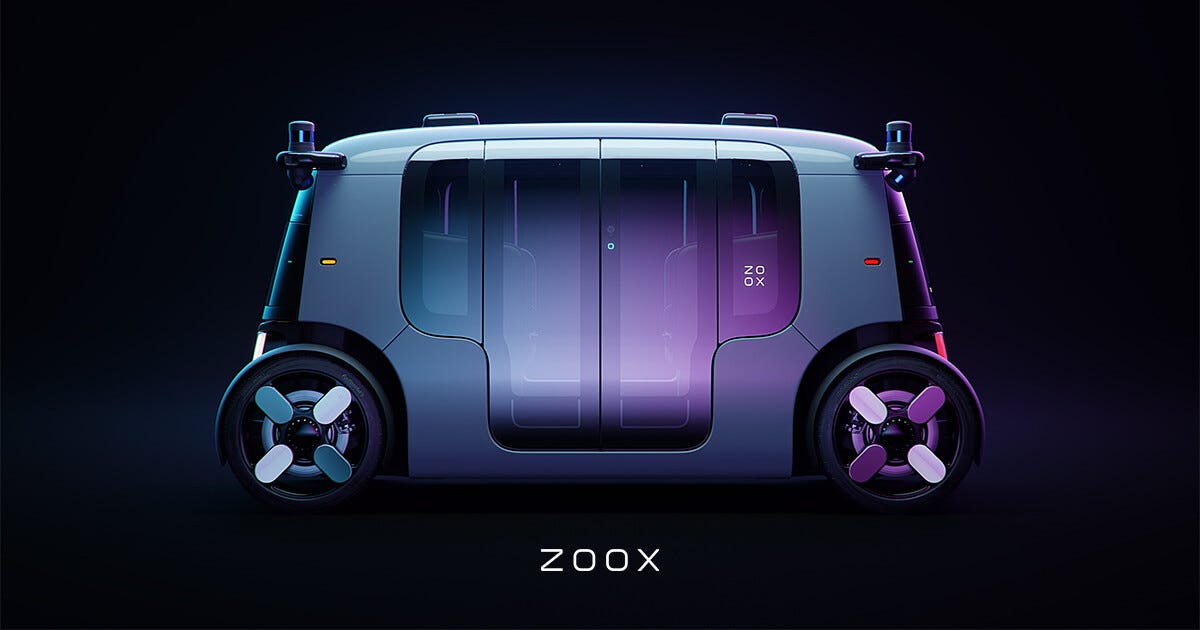Why self-driving cars will be boring
For nerds, the computers, sensors and systems that make them not kill us will fascinate. But we'll know autonomous cars are real when nobody cares anymore.
Amazon is building a self-driving car. Weird, right?
Well, not really.
Today cars are a big deal — the most or second most expensive thing most people own (depending on whether they rent or own a house). They’re big and dangerous. Buying one is a kind of right of passage to adulthood. Cars are associated with the “American Dream.”
In the future, however, I think the average car will become far smaller, lighter, less expensive and less important than they are now. They won’t really be cars, in the way we think of cars.
Just take a look at Amazon’s car. It’s being developed by an Amazon subsidiary called Zoox. It’s fully electric, and better described as an urban people mover.
Like the Nuro, LUTZ Pathfinder and Toyota e-Palette, the Amazon car, also called the Zoox, is designed to function as a driverless taxi. And it goes both ways, driving forward and back — in fact there is no front or back of the car. Four interior seats face each other and there’s no driver’s seat or steering wheel. The whole car is just 12 feet long and tops out at 75mph.
The experience will be more like a ride at Disneyland and less like “driving.”
The technology will be in navigation, safety and battery management. They’ll be super high tech, for lack of a better phrase. But the more advance and ubiquitous they become, the less we’ll care about them. Self-driving cars will become a banality.
The same thing happened with consumer drones, by the way.
When consumer drones first hit in the 90s, they were hard to fly, large, expensive and it was unclear what they would be used for other than as an overpriced toy for enthusiast hobbyists. Back when they were relatively low tech, they were considered extreme high tech. Fast forward to today, and drones are easy to fly, tiny, cheap and extremely high tech. For example, the newish DJI Mini 2 folds up to nearly pocket size, weighs close to nothing, costs less than $500 (less than half the price of an iPhone) and has a range beyond 5 miles and returns to home automatically, so you can’t lose it.
More importantly, drones are kind of boring now. They’re just cameras that can be placed anywhere. A drone is essentially a miles-long selfie stick.
Security, delivery and military drones are far more interesting and expensive. But for consumers, drones are now cheap, high-quality cameras.
As boring as they are, drones will always be less boring than self-driving cars. Once commodified, the market for autonomous cars will be a race to the bottom in terms of price. For most uses, they’ll be utilitarian conveyances packed with extreme compute power and sensors that nobody will care about.
Sure, actual human-driven cars and high-end, luxury autonomous cars will exist. Some will have holodeck-like VR content consumption experiences, or beds or bars or optimized for other recreations. But most of the cars on the highway will be boxes with chairs in them that take you where you want to go. They’ll be exciting for the first ride or two.
After that, we’ll barely give them a second thought.



